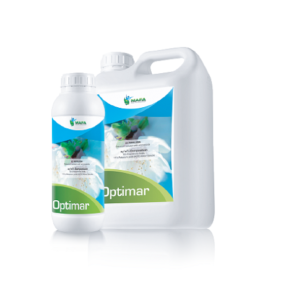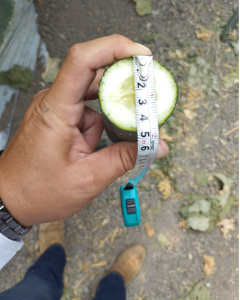Cucumber cultivation is very important, due to it has a high consumption rate. Furthermore, it is a stable production in terms of cultivated area. That is why in this case we focus on a trial aimed at demonstrating the high effectiveness of MAFA biostimulants. For our team of expert agronomists, it has been interesting to compare the effectiveness of Greencal, Aminon WSP and Optimar against crops with other types of products, to demonstrate how it affects plant development and greater crop yield.
Biostimulation in cucumber cultivation contributed to optimal vegetative growth of plants, as well as increasing the quantity and quality of fruits.
THE THREE BIOSTIMULANTS ARE USED

AMINON WSP
80% free amino acids that have a stimulating effect on the plant during its active growth phase and flowering periods.
Its development is based on a modern natural protein hydrolysis process that allows obtaining a product with a high content of biologically active free amino acids.
It presents 19 essential amino acids and a highly soluble micro powder formulation.

OPTIMAR
It is a bioactivator formulated from natural extracts from seaweed (Aschophyllum nodosum).
Its exclusive formula from a combination of acids (alginic, folic and gluconic) forms a serum that promotes an increase in cell size by inducing protein synthesis.
This results in healthier plants and an increase in the size and weight of the fruits.

GREENCAL
It is a cream with a powerful biostimulant effect, formulated from a pure algae extract (Ascophyllum nodosum) combined with calcium and boron.
The macroalgae extract used is obtained through low temperatures and cell rupture, extracting the natural active components present in the algae Ascophyllum nodosum (alginates, mannitols, polysaccharides and polyphenols). This improves the firmness of the fruit.
THE EXPERIMENT, IN DETAIL
The trial covered 1.3 hectares where the MAFA biostimulants were applied and a similar area (control) where their usual biostimulant products were applied. On both evaluated surfaces, the cucumber variety (Azulan), the planting time and agronomic management were similar.
The trial, which was carried out on Grupo la Tuxcana farms, was carried out between February and March 2024 by agricultural engineers Javier Vargas Juan Manuel Cibrián.
In order to determine the vegetative variables, 5 quadrants of the treatment and 5 quadrants of the control were determined. Each quadrant was made up of 10 plants, in which the treatment was applied periodically foliarly (400 l/ha) and by drip irrigation. For the study, the following variables were measured on February 19, February 27 and March 25:
- Total plant height (cm)
- LAI (Leaf Area Index)
- Fruit diameter
- Fruit length
The doses were as follows:
- Greencal 1.25 ml/L + Aminon 1.25 gml/L with foliar application (400 L)
- Greencal 1.25 ml/L + Aminon 1.25 gml/L with foliar application (400 L)
- Greencal 0.76 L/Ha + Optimar 0.76 L/Ha applied with drip irrigation
THE RESULTS, IN GRAPHICS
LAI (Leaf Area Index)
- 19-feb
- 27-feb
- 25mar
- 19-feb
- 27-feb
- 25mar
Total plant height
- Control
- MAFA biostimulants
- Control
- MAFA biostimulants
Diameter and length fruit
- Control
- MAFA biostimulants
- Control
- MAFA biostimulants







